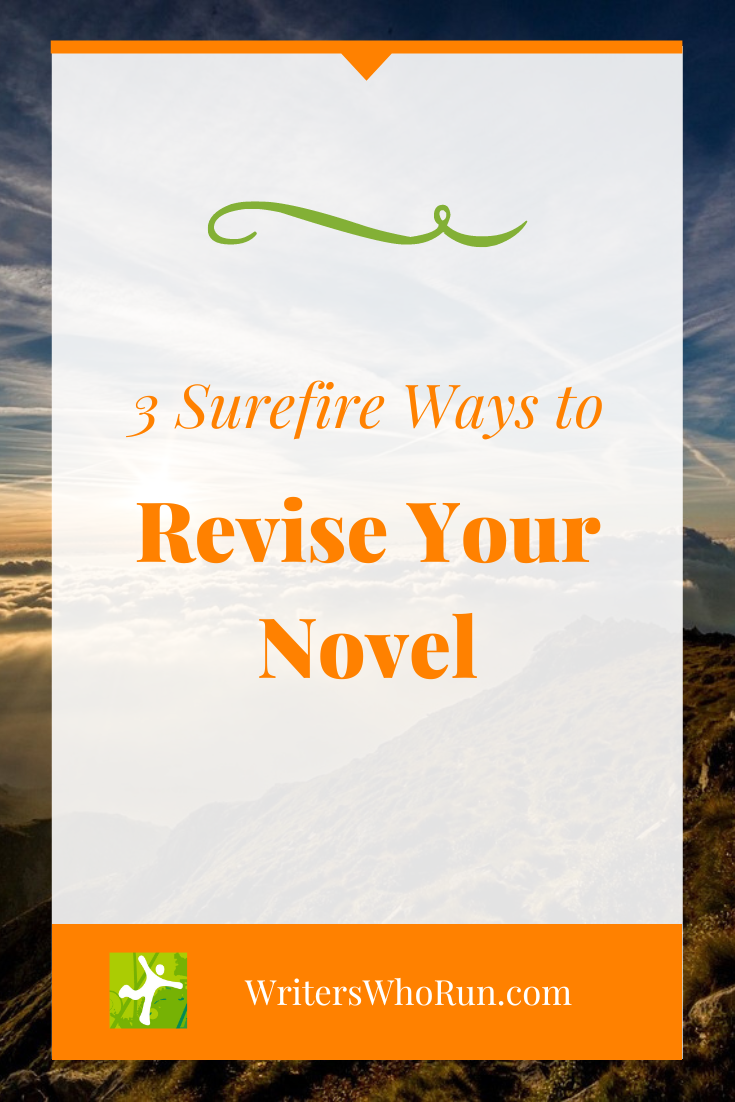|
The number one challenge writers face is learning the craft. The number two challenge is how to revise and edit your novel, but revising doesn’t have to be hard. If you’ve written the first draft, spend an entire week celebrating. That’s a huge accomplishment! You just overcame the third biggest writing challenge: finishing your first draft. But don’t start submitting your work just yet, you need to revise your story so it shines and editors will want to publish it. Let’s talk about three ways you can revise your novel. Start Revisions by Looking at Plot Whenever I’m helping other writers revise their novels, we always start with plot. Whether you’re writing your first draft, or you’re starting the revision process, knowing your five main plot points will help you create a stronger plot and a better story. Revision can - in a sense - happen before you ever write your first word. Which is why creating a plot outline before you write helps cut down on your revision timeline. If your plot points aren’t identified correctly, your pacing will be off. Being able to know which plot points are most important and where to properly place them will help you avoid a slow start and a saggy middle. For example, the most important scene for the middle of your novel should show up in the middle. But if the scene you have that shows up in the middle is your two characters leaving the ranch, when it really needs to be when they finally reach the canyon, then you’ll have to revise – or rearrange – your plot points so that your character motivations, pacing, and storyline flows better and makes more sense. So start all your revisions by looking at your novel’s plot points first. And revise accordingly. Revise Your Novel at a Week-Long Getaway When you think about the top challenges writers face: craft, revision, finishing your book, not having enough time to write, and not having a critique group, attending a writing retreat is one of the best ways to help you. Taking some time for yourself is a great way to gain momentum with your revision. Take a week off and plan to attend a world-class writing retreat in western North Carolina, where you’ll overcome the top 5 challenges writers face and:
10-Point Revision Checklist
Using a checklist is a great way to start revising your novel. Once you revise the plot and have a good development of character and conflict, your story will begin to take shape. When you get all the big pieces in place, you can start revising further and you’ll be editing to polish the story rather than revising the plot. Start with plot and revise that first. Then move on to the checklist. Here are 10 things to keep in mind and start looking for. Start at the top and work your way to the bottom. Your manuscript will be much tighter when you finish the checklist and apply it to your whole novel. The first five can be applied on a scene by scene basis or a chapter by chapter basis. The last five can be applied to the whole novel all at once. For example, revise chapter 1 by going through #1, 2, 3, 4, and 5. Then do all five with chapter 2. When you get to the last five items on the checklist, do #6 for the whole novel. Then #7 for the whole novel, etc.
When you’re ready to revise your novel, or your short story, now you have three excellent ways to tackle your revisions: look at plot first, attend the Writers Who Run Retreat every July, and use the 10-Point Revision Checklist. Happy revising! Keep writing, keep running. XO, Christie 😀 P.S. Which do you like better? Writing the first draft? Or revising it? Let us know on the Writers Who Run Facebook page. Comments are closed.
|
Christie Wright Wild
Founder, Writers Who Run Creator, Plot Like a Novelist Books
My Dandelion Wish Journal: A 5-Year Guided Nature Journal
101 Fun Creative Writing Exercises: Become a Better Writer in 14 Minutes a Day Categories
All
Archives
October 2023
|





 RSS Feed
RSS Feed